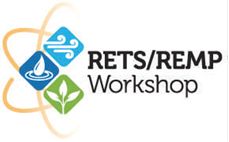Assessment of the Molecular Separations Inc. (MSI)
Tritium Resin Separation (TRS) Process
Naughton, Michael EPRI; Snead, Paul*, CP&L,
Bushart, Sean, EPRI; Furlong, Lou, MSI
The TRS is a proprietary process for the preferential removal of tritium from liquids.
The process has been shown to selectively load tritiated water (HTO) through the hydration
of a conditioned resin media. Early laboratory tests conducted at Washington State
University and Clemson Environmental Technology Laboratory confirmed the selective
adsorption of tritiated water (HTO) by means of the TRS process.
Based on these findings, EPRI initiated a research project with CP&L to evaluate
the TRS process. This goal was to extend earlier results of laboratory experiments to a
size that would allow reasonable scale up to commercial processing. Additionally, various
tasks were designed to define key process parameters and uncover limiting conditions that
would adversely affect the process.
Major findings of the EPRI Assessment Test Program:
- The Tritium Resin Separation Process does selectively remove tritium from solution by a
hydration mechanism. Removal efficiency rates ranged from 0 to 39% in beaker and column
tests. The highest removal rates were seen in tests using an inorganic exchange resin.
- At this point the TRS Process has not been shown to be an economically viable process
technology. The present technology can be characterized as having extremely short runs,
long drying cycles and relatively low tritium removal efficiency per cycle. Further
development work is needed for a commercially viable process.
- Test results confirmed the requirement of complete removal of ionic and organic
contaminants prior to the process.
- The proposed use of an organic exchange resin resulted in a major failure due to rapid
degradation of the media due to drying temperature. The use of an inorganic resin is
recommended for future trials.
- Operation of the test columns as a "fluidized bed" resulted in a major loss in
the tritium decontamination factor and did not allow for the determination of the final
tritium removal capacity for the media.
A full EPRI report containing the results and conclusions from this testing will be
available to EPRI members. Although this study did not demonstrate that this process, as
tested, is currently ready to be used for tritiated water treatment in the Nuclear Power
industry, it did show that the process does indeed selectively remove tritium from
preconditioned wastewater. EPRI is willing to work with utilities in the future to further
develop this technology for their use, through laboratory or field pilot demonstrations.
*Presenting Author
